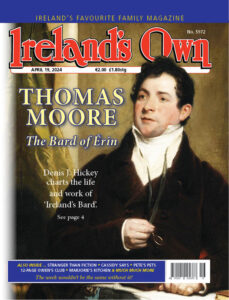Princess Diana’s impeccable Cork roots cannot be denied, writes Pat Poland
When Diana (née Spencer), the late Princess of Wales, referred disparagingly to her royal in-laws as ‘the Germans’, she was not joking. She was forcefully making the point that, so far as the aristocratic pyramid on these islands was concerned, she could trace her provenance back, beyond them, by a long mile.
When William the Conqueror and his knights from Normandy vanquished King Harold at the Battle of Hastings on the south coast of England in 1066, her ancestors were among the invaders. And when the first cohort of chain-mailed Cambro – Normans splashed ashore at Bannow Bay in County Wexford on 1 May 1169, Diana’s distant relatives were among the first to get their feet wet.
It is safe to assume that David, Adam, and Henry de la Roch were here, not as mere curious day-trippers nervously clutching their TUI boarding cards, but to stake their claim to any slice of the action that might be on offer.
Over time, they would, like their compatriots, become ‘Níos Gaelaí ná na Gaeil féin’ – ‘More Irish than the Irish themselves’.
 ‘The Germans’ indeed! Diana knew full well that her in-laws, the Windsor’s, were, in the aristocratic pecking order, mere Johnny-come-lately’s, interlopers whose pedigree began only in 1840 when the German Prince Albert married Queen Victoria (of German extraction) thus establishing the House of Saxe Coburg und Gotha in Britain. (Due to anti-German sentiment, they changed their name by Royal Decree to the ‘House of Windsor’ in 1917).
‘The Germans’ indeed! Diana knew full well that her in-laws, the Windsor’s, were, in the aristocratic pecking order, mere Johnny-come-lately’s, interlopers whose pedigree began only in 1840 when the German Prince Albert married Queen Victoria (of German extraction) thus establishing the House of Saxe Coburg und Gotha in Britain. (Due to anti-German sentiment, they changed their name by Royal Decree to the ‘House of Windsor’ in 1917).
So far as Cork is concerned, Diana’s people have been around these parts for a long, long time. Over the centuries, the list of Cork City Sheriffs and Mayors is peppered with the surnames Coppinger and Roche, both related to Diana on the distaff side. (The name Despencer (de Spencer) also crops up.
In fact, the first, if you like, ‘City Manager’, Provost John Despencer, was appointed in 1199, although the connection with Dianas’s father’s side (the Spencer’s) remains unclear).
Here, then, are twelve abstracts from the late Princess’s Cork roots which may be of interest:
• 1. The Cambro (or Welsh) Normans who came to Ireland in 1169 at the invitation of the disaffected King of Leinster, Diarmuid McMurrough, included members of the Roche family.
Descendants of Richard FitzGodebert of Flanders, the family had a castle in Pembrokeshire in Wales built on a mountain precipice, or rock, and were known as ‘FitzGodebert’s de la Roch’. From that, their Hiberno-Norman descendants were known as ‘de la Roch’, and, over time, simply ‘Roche’.
These were Diana’s maternal ancestors. Blanche, Lady de la Roche-Fermoy (1275-1342) was her 20th great-grandmother.
• 2. Like so many of the Anglo-Normans that arrived in the twelfth century as ‘invaders’ (more appropriately, perhaps, as ‘invitees’) the Roche’s eventually became loyal to interests different from those of Britain, allied with the Irish aristocracy, and came to be regarded as rebels.
Continue reading in this week’s Ireland’s Own


